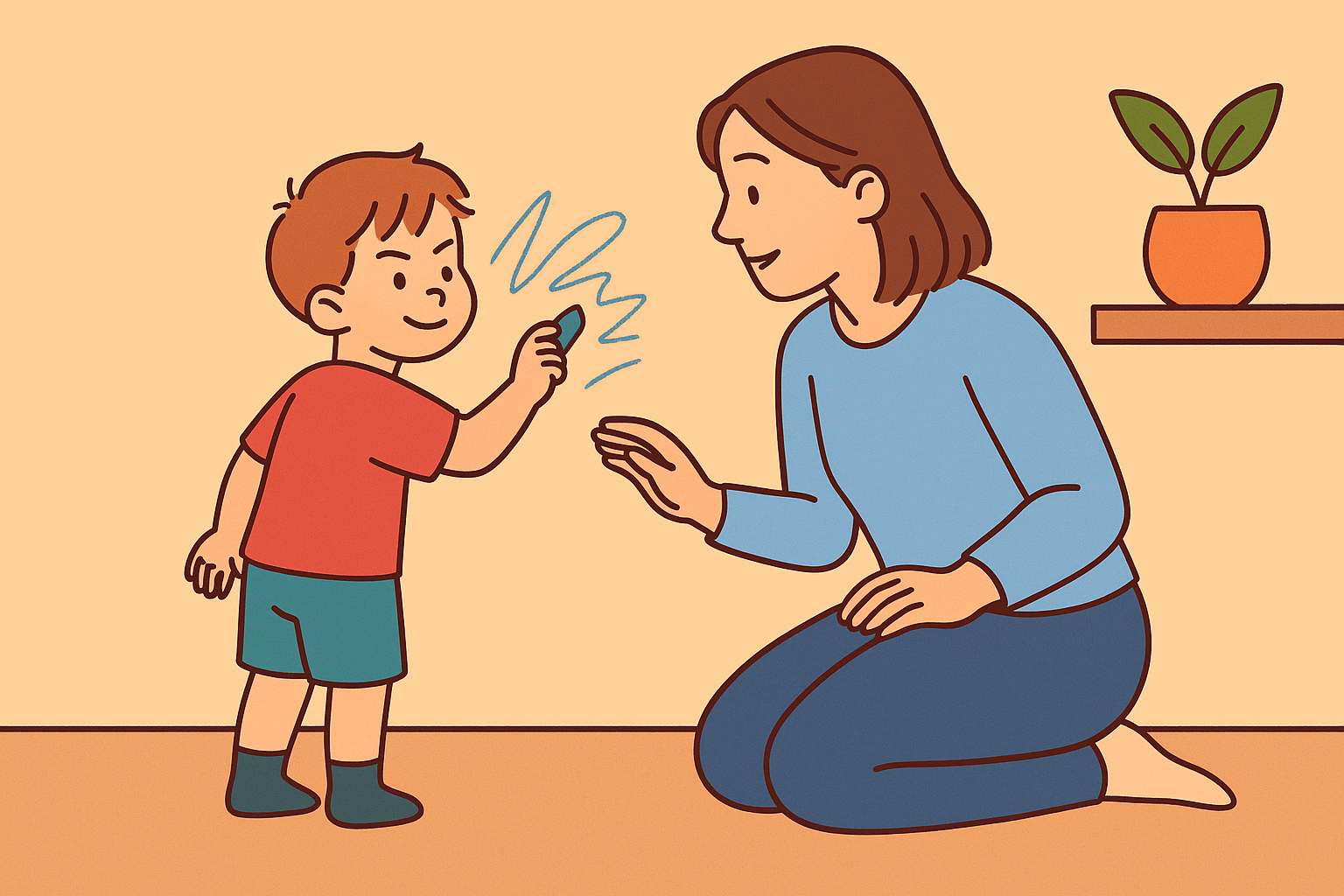When Kids Test Boundaries on Purpose
When Kids Test Boundaries on Purpose
You ask your child not to do something… they look right at you — and do it anyway.
Every parent has faced that stare. It’s not always rebellion. Sometimes it’s curiosity, confusion, or a quiet question: “Are you really in charge, and am I really safe?”
Testing boundaries isn’t misbehavior — it’s development. It’s how kids learn where safety, authority, and trust begin and end.
Why Kids Test Limits
Children test rules because they’re exploring:
Predictability: “Will you react the same way each time?”
Power: “How much control do I have here?”
Connection: “Do you still love me when I push?”
✨ What looks like defiance is often a request for reassurance:
Show me that the boundary holds — and so do you.
👉 See also: Balancing Firmness and Flexibility
1. Stay Consistent, Not Harsh
Every boundary needs clarity — but not cruelty. Consistency means following through, not escalating.
Say:
“You know the rule. I’ll help you remember it.”
“If you throw the toy again, it’s put away for now.”
✨ Calm follow-through teaches trust, not fear.
Skill focus: predictability, accountability, structure
2. Connect Before You Correct
When kids feel emotionally disconnected, they’re more likely to test limits to get your attention — even negative attention.
Try:
“You’re having a tough time listening right now. Let’s take a minute together.”
“I still love you. I just can’t let you hit.”
✨ Connection first ensures correction lands softly and clearly.
Skill focus: emotional safety, empathy, trust
3. Use Predictable Consequences, Not Surprises
Avoid punishments that feel random or fueled by frustration. Use logical outcomes tied to behavior.
For example:
“If you keep jumping on the couch, we’ll take a break from that room.”
“If you splash water out of the tub, bath time ends early.”
✨ Predictability equals security — even when it’s uncomfortable.
Skill focus: cause-and-effect learning, fairness, responsibility
4. Avoid Over-Explaining
Overexplaining turns discipline into negotiation. Keep limits clear and kind: short phrases, steady tone.
Try:
“I understand you want to. It’s still a no.”
“You can be mad, and the rule stays.”
✨ Simplicity signals confidence.
Skill focus: communication, authority, clarity
👉 See also: Helping Kids Follow Directions — Even When They Don’t Want To
5. Give Controlled Choices
Offer small, safe opportunities for autonomy — inside your boundaries.
Say:
“You can walk or skip to the car.”
“You can put on pajamas before or after brushing teeth.”
✨ When kids have agency, they test less.
Skill focus: independence, decision-making, collaboration
6. Name the Pattern
When testing repeats, bring awareness without shame.
Say:
“I’ve noticed you keep pushing this rule. Are you feeling mad or bored?”
“Seems like you’re checking if I’ll stay calm.”
✨ Naming the dynamic makes the invisible visible.
Skill focus: emotional literacy, reflection, problem-solving
7. Keep Emotional Boundaries Too
Children watch how you hold yourself during conflict. Don’t let frustration turn into personal offense.
Remind yourself:
“They’re not doing this to me — they’re doing this near me.”
✨ Emotional separation keeps your authority compassionate.
Skill focus: self-regulation, emotional control, modeling
8. Reinforce Respect After Boundaries Hold
Once calm returns, show that structure equals safety.
Say:
“You didn’t like that rule, but you handled the consequence well.”
“Thanks for trying again — that shows maturity.”
✨ Positive reflection closes the loop and strengthens trust.
Skill focus: resilience, learning, cooperation
Key Takeaways
Kids test limits to understand safety and predictability.
Consistency builds trust faster than punishment.
Offer structure and autonomy within clear boundaries.
Stay calm, concise, and connected — that’s real authority.
Boundary testing isn’t disobedience — it’s a question of safety, power, and consistency. Each test gives you a chance to show that love stays steady, rules stay clear, and emotions stay safe. When your calm holds firm, your child learns that limits don’t confine — they protect.
This content is for educational purposes and is not a substitute for professional medical or psychological advice.
Popular Parenting Articles


